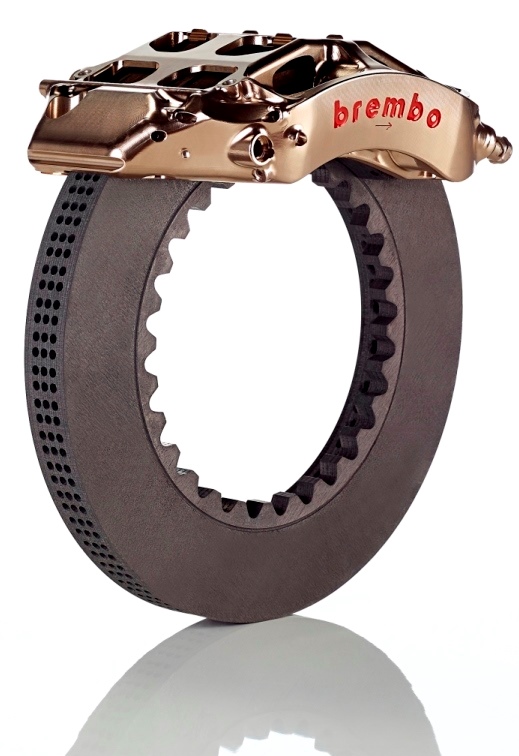YEAR ONE: ACCEPTING THE CHALLENGE
With the introduction of Power Units, in mere months the single-seaters went from 750 hp (estimate at the end of 2013) to 850 hp (2014 World Championship). Also, a new regulation imposed an increase in the minimum weight of the cars: from 642 kg in 2013 to 691 in the subsequent championship.
Both of these changes led to significant repercussions on the braking system, which experienced much greater stress than in the previous year. Additionally, when the ERS was introduced, flanked by the KERS, the rear portion of the braking system had to be redesigned.
To ensure proper braking action on the rear axle, Brake-By-Wire (BBW) technology came into play. This assisted braking system activated by the rear system takes braking away from the driver and entrusts it to an electronic control unit.
Increased braking distribution on the rear axle, on the other hand, led Brembo to decrease the diameter and thickness of the rear brake discs in order to accommodate the reduced amount of energy in the rear that needed to be dissipated.
2014 RESULTS: 19 VICTORIES, 18 POLE POSITIONS, 16 FASTEST LAPS, 45 PODIUMS AND 1,083 LAPS LED.
YEAR TWO: PROVE YOURSELF
In 2015, the minimum weight of the Formula 1 single-seaters was raised again, taking it to 702 kg, and more chiselled tyres were introduced.
Yet the drivers managed to extract even more power from their engines, guaranteeing nearly 900 hp. Obviously all of this obligated the brake producers to put the braking systems back on the design table and adjust them to the new requirements of the single-seaters.
To improve the cooling method for the carbon brake discs, which can reach 1,200°C in Formula 1, Brembo increased the number of ventilation holes from 1,000 to 1,200 while at the same time reducing the dimensions.
Naturally, ventilation was adapted to the specific needs of the different single-seaters in order to best match the air intakes used by the various teams. The more efficient brake calipers in aluminium/lithium that Brembo produced through mechanical machining lasting more than 14 consecutive hours represent the perfect balance between weight and stiffness.
In addition to this, Brembo introduced a new friction material. Using CER 300 as the material for the discs contributed to significantly reducing wear while ensuring more effective thermal conductivity and less warm-up time. The pads also saw change as the ventilated CCR 700 pads were launched.
2015 RESULTS: 19 VICTORIES, 19 POLE POSITIONS, 19 FASTEST LAPS, 51 PODIUMS AND 1,129 LAPS LED

